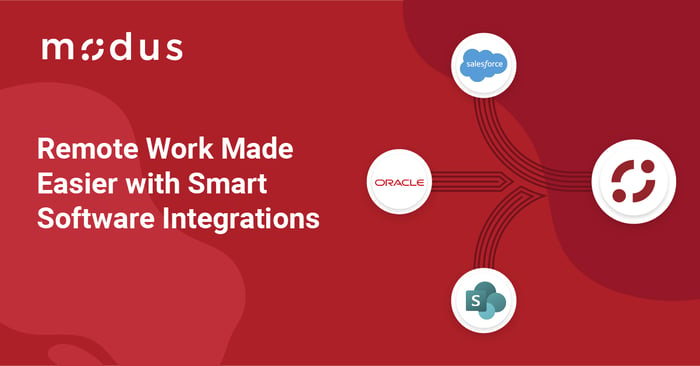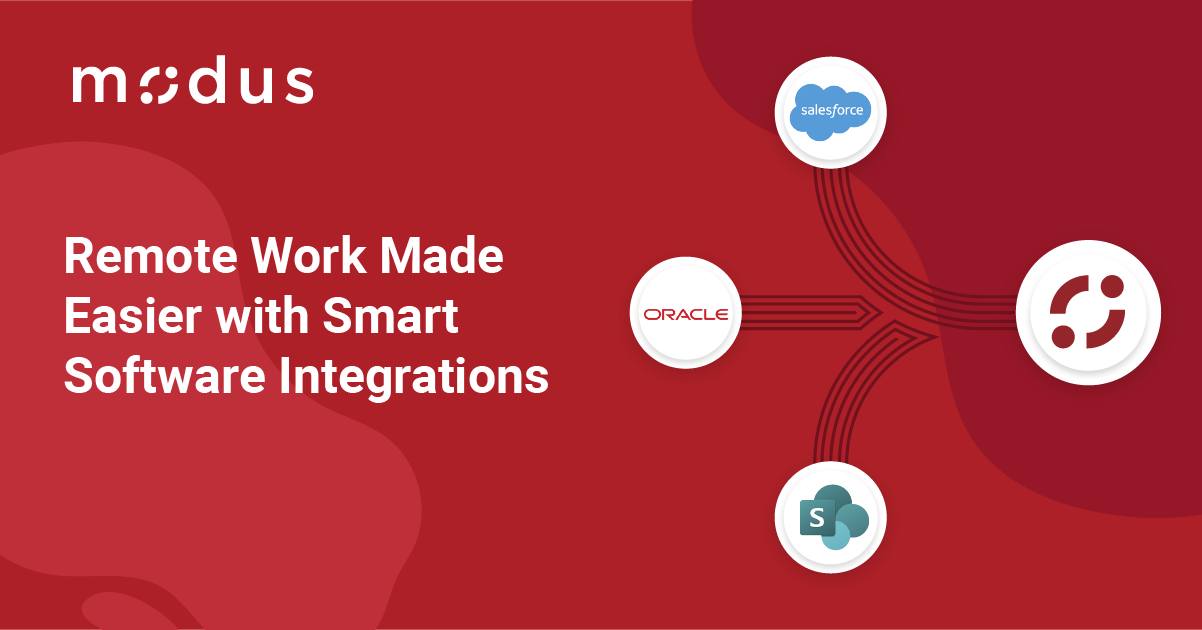 For many of us, working from home hastily became the norm quite a few weeks ago. This quick transition has proven insightful about the real-life consequences of partially and fully remote teams. From challenges in connectivity, communication, and collaboration and distractions from home life; to benefits like less commuting, and having more productive hours, the results are informative and actionable.
For many of us, working from home hastily became the norm quite a few weeks ago. This quick transition has proven insightful about the real-life consequences of partially and fully remote teams. From challenges in connectivity, communication, and collaboration and distractions from home life; to benefits like less commuting, and having more productive hours, the results are informative and actionable.
In order to maintain communication, culture, and sales effectiveness, business leaders need to react and adapt accordingly, especially in the way they use their digital tools. Ensuring your sales and marketing software solutions are fully utilized and incorporated into your strategy is crucial for continuing business even when it’s far from usual.
Get More From the Systems You Have
Often, the way that tools integrate together is the key to a fully functioning process. One that can potentially improve remote work scenarios no matter how they play out.
Getting teams (especially remote teams) to adopt new technologies and processes is hard in the best of times, so effectively using what you have in better ways is the practical path of least resistance. Start by evaluating what’s changed. Maybe more leads are coming from the website and social advertising since trade shows are off, and there’s room for improvement to a manual process with your CRM.
Or maybe the current situation has meant changes to your products to meet safety standards and updated specifications on product content is crucial. Getting your content source of truth to feed your other systems can keep everyone up to date or compliant. With so many changes coming at us, knowing your teams can have what they need quickly helps you pivot as necessary. If you’re in the market for an asset management system, we’ve already helped others integrate their Modus Hub with Box, Sharepoint, Widen, and Sitecore.

It's not just about processes either, learning and training is now likely fully digital and also has its challenges. Innovative software solutions often set themselves up to integrate with others to keep their niches and do what they do best. It’s always worth asking your vendors for a list. Maybe your training team uses Brainshark, and they had no idea an app was already in the hands of the sales team where their content could live. (Hint, this is coming any minute from Modus.)
Integrations Help Unite Sellers with Buyers And Give You Insight
Even beyond your own teams, integrating the right software to reach your buyers is even more crucial now. What if a one on one sales conversation could result in the buyer being added to a drip campaign for exactly the new products they are interested in? Marketing automation platforms are often underutilized, so feeding and informing them well is key to reaching your buyers in the moments that matter. Integrating sales enablement tools like the Modus Hub can inform these systems like Hubspot, Marketo, and Eloqua (and more) about the actual content exchanges between your team and your buyers. That’s powerful.
We all know that sales people hustling to meet quota don’t always put notes in CRM and are not likely to call and tell you what new products their loyal customers are asking about. But maybe their sales tool activities can keep you informed about how they use your content effectively. (Hint again: Modus can do this, too).
Preparing for a Productive Way Forward
Predictions and opinions about the longevity and permanence of these remote work changes vary widely, but no matter what, preparing for this to be more normal in many capacities just makes sense. Pre Covid-19, the effectiveness, benefits, and detriments of remote work were already under scrutiny as emerging shifts in workplace norms moved toward flexibility, but there was still plenty of resistance, and productivity worries for some.
After so many weeks of remote work, the shift in attitudes about productivity levels is noticeable in business social feeds. That, along with uncertainty about safety for less than sterile and spacious work environments, and the realization that you don’t have to commute every day, has made working from home more attractive, less stressful, and more convenient for many office workers, especially those in sales and marketing.
According to a recent Gallup Poll
Three in five U.S. workers who have been doing their jobs from home during the coronavirus pandemic would prefer to continue to work remotely as much as possible, once public health restrictions are lifted. In contrast, 41% would prefer to return to their workplace or office to work, as they did before the crisis.
While employee opinions likely differ from employer ideals and actions, this shift will have at least some lasting consequences as companies do their best to retain talented employees. Taking time to evaluate all of your software and how it can work together will at the very least, give you good ideas, and has the potential to fully automate a process, or significantly improve employee productivity or knowledge access while people are scattered.
What’s the Best News Here?
Almost no one uses any of their software solutions to their full potential and taking time to learn what you’re missing could prove invaluable as the remote working experiment continues, especially when it comes to integrations. Having a practical tech stack to maneuver with in the near term and beyond is crucial. Time to hit the reset button and hook it all together.



